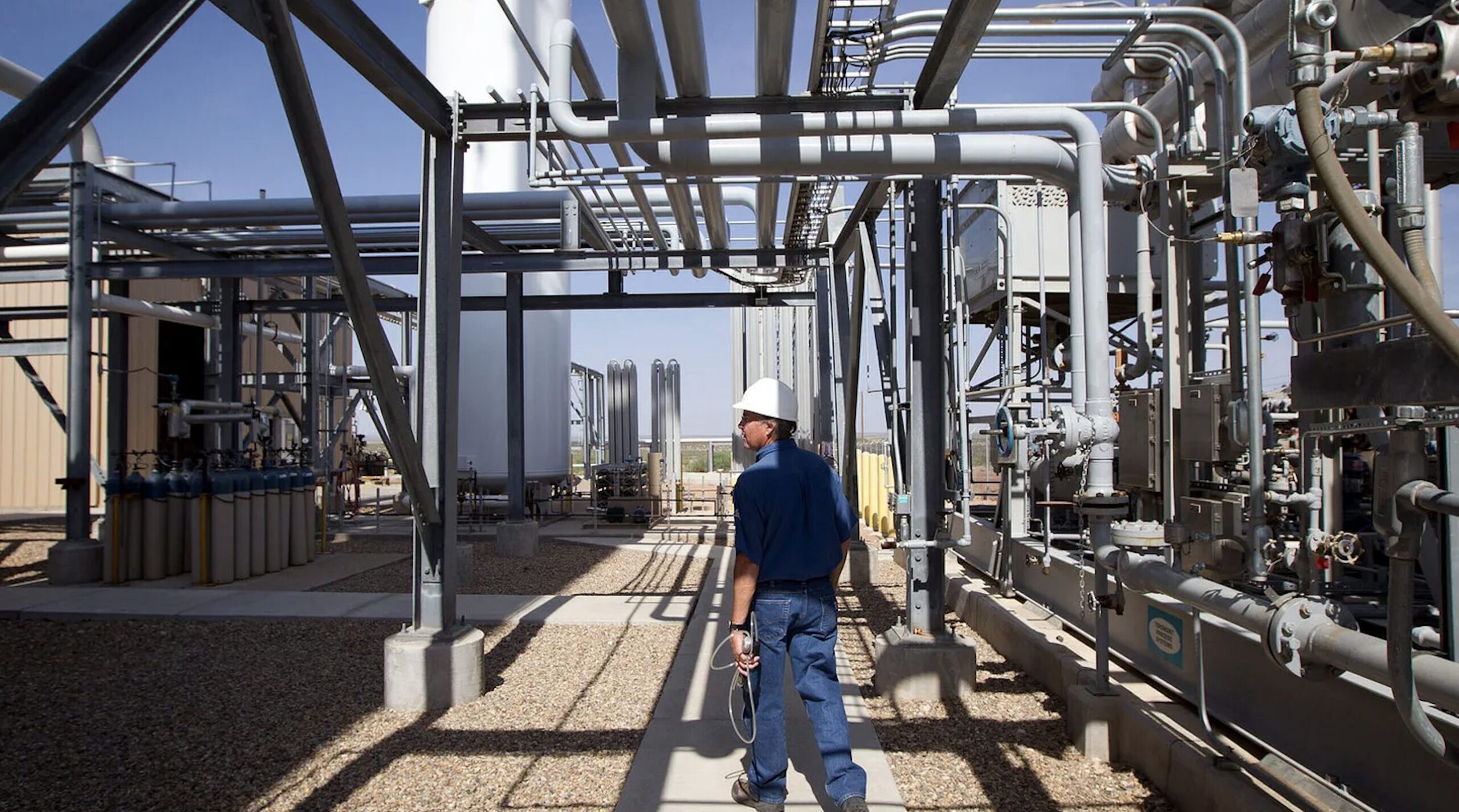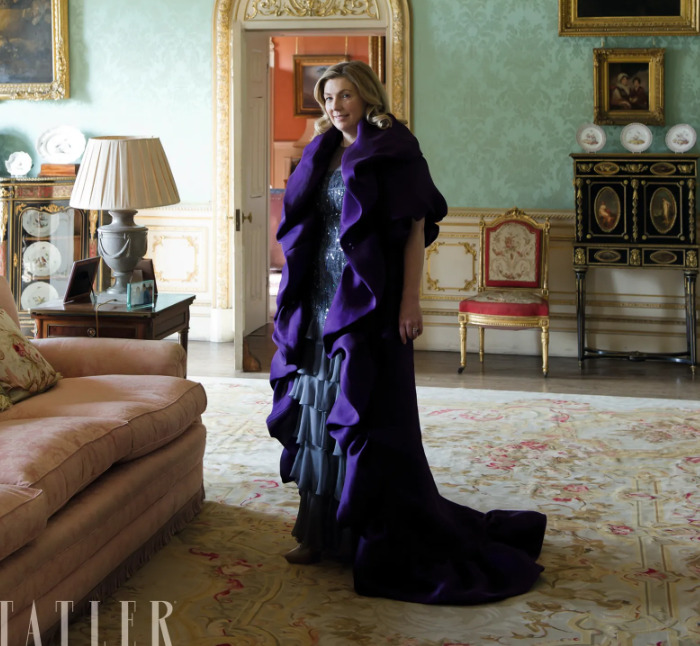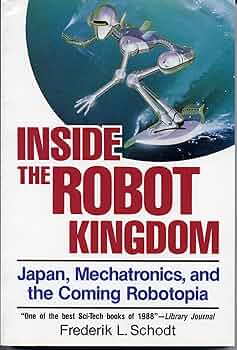
Eyck Freymann: How to Break China’s Minerals Chokehold
Why the allies need a multilateral commercial stockpile This essay is based on a Hoover History Lab working paper, co-authored with Joshua Stinson, William Norris,…
Thought Leader: Eyck Freymann

When writer Evelyn Waugh arrived in Georgetown, British Guyana, he was probably in need of a break. The journey overland had been exhausting, and the recently divorced writer was probably still languishing in the throes of unrequited love for socialite Teresa Jungman. This 700-mile psychomachia in the Amazonian rainforest would go on to inspire A Handful of Dust, one of Waugh’s most sinister novels. Clearly, though, between scorpion-ridden mattress, soporific rum swizzles and vampire bats, Waugh found himself in suitable comfort to employ one of his most exclusive of adjectives. ‘Darling Blondy and Poll,’ he wrote in a letter to Lady Mary Lygon, the niece of the Duke of Westminster on whom Waugh would base Julia Flyte in Brideshead Revisited, ‘I am back in Georgetown and all the world is Highclere.’
So enamoured by Highclere Castle was this most caustic of high-society cartographers that Waugh would employ the name of the seat of the Earls of Carnarvon to describe any country house or weekend of partying that he deemed to be sufficiently luxurious. Almost a century later, its Jacobean towers and Capability Brown gardens attract thousands of visitors, who make the pilgrimage from climes as far flung as Tennessee to spend a day at the ‘real Downton Abbey’.
Lady Fiona Carnarvon has just spent the afternoon with some of them, pulling weeds in the sun on Highclere’s 5,000-acre estate. ‘It’s a cor blimey massive task,’ she jokes, Highclere Castle cap on her head. ‘I thought we had enough people – we had 60 or 70 but I’ve realised we needed 200.’ Over a cup of tea, she espouses the benefits of getting your hands dirty: ’it’s the most amazing community feeling. I think it’s very good for mental health, gardening, weeding – it’s about not being in front of the blooming TV!’ But on their breaks, between sips of sparkling wine from the vineyard (and, later, maybe some Highclere Castle Gin), conversation turned to precisely that: Downton Abbey’s return to the castle, as the cast and crew begin shooting for the third film in the beloved series.
‘It’s a different rhythm and way of life, it’s quite intense,’ says Lady Carnarvon of those summer months when Hollywood comes to Hampshire. Perhaps she is thinking of her labradors pinching sandwiches from the crew’s tea-time trestle tables, or her husband Geordie, 8th Earl of Carnarvon, engaging in a minor skirmish with a set-dressing palm tree (something to which Evelyn Waugh could surely relate, all those years ago in Guyana). It’s a fairly unique juxtaposition, she agrees, watching a fictional dynasty inhabit your very real family home, but Lady Carnarvon believes homeliness is the reason Julian Fellowes wrote Downton with Highclere in mind to begin with. ‘It was actually built as a home,’ she says, ‘so it wasn’t like Blenheim or Chatsworth, these staggeringly beautiful palaces, where I would need a retinue of 20 footmen to follow me through a marble hall. It was built around the sense of family.’
It gives the Countess an original perspective on the show: watching the cast film night shoots on the longest day of the year; seeing her friends take part in riding scenes alongside a side-saddle Michelle Doherty and the Vine and Craven hunt; or hosting lunches while sat between Hugh Bonneville and Geordie himself – Lord Grantham, meet Lord Carnarvon. Even some of Downton’s most moving moments become tinged with the quotidian when they’re shot in your guest room. ‘It was the most amazing, beautifully crafted and acted scene, which I think made everybody cry,’ she says of watching Jessica Brown-Findlay enact Lady Sibyl’s tragic death in her portico bedroom. But when you have a house to run, you don’t always have spare time for the protracted business of passing away: ‘It was probably a whole afternoon of filming – I can just remember sitting on the other side of the gallery thinking it’s 7pm now, they must have got this’.
Lady Carnarvon’s most treasured Downton memory? Sitting down at the film premiere in New York and seeing the opening shot of Highclere Castle rise up onto the cinema screen, golden in the early morning light: ‘Everybody in the auditorium, all those hard-bitten New Yorkers, clapped and cheered. So I cried. I found it so moving.
‘How extraordinary was that? That this extraordinary home, built by craftsman and architects, without all the instruments and mechanical means we have today, but with drawings and precision, created something of such harmony, which welcomes people and makes me cry.’
But New York Anglophiles aren’t alone in their love for a period drama. Whether it’s regency romps or Gilded Age family feuds, shows like Downton Abbey and Bridgerton – and by extension their country house filming locales – have captured something of the modern-day zeitgeist. ‘I think it’s about values and where we come from,’ says the Countess of the sudden surge in the genre’s popularity. ‘It’s a frightening world at the moment. It’s an angry world. It’s an unkind world. It’s a world where individual people seem to be causing immense harm to many, many people. And the world of Downton is one which is very different from that. So what can we bring forward from that?’
It’s a question that Lady Carnarvon often considers as she walks through Highclere. With settlements dating back to the Neolithic period, the estate has been witness to 1,300 years of national history – much of which she has covered in her many books, written partly to encourage visitors to ‘invest in what is real’ after the success of Downton and partly to satisfy her palpable love of literature. ‘My parents always said “there’s a book in all of us, darling!”’ the Countess recalls – she had far more than that, including New York Times bestseller Lady Almina and the Real Downton Abbey (‘it still makes me cry now’) and Seasons at Highclere. As she describes researching the latter, a documentation of Highclere’s history, her manner of speech is as much evidence of an authorial mind as her accolade-winning works:
‘Sometimes in the soft light of a winter’s day, with the way the shadows fall, you can see where the roads were, where the remains of the houses were. When you go out, you’re looking at Iron Age Fort and the buildings within it – you can see where the lines of agriculture were.’
She continues: ‘I’m always thinking about bringing the past forward into today, because we are no different today from the past. We’re the same people, with our same happiness or sadness or anger or patience. Whatever the characteristics are haven’t changed within us personally, but our ability to hurt each other seems to have increased, and the speed at which we can do it seems to have increased. I think it’s, again, slowing down the world – looking backwards and enjoying and learning from the past.’
Now, the Countess of Carnarvon has set to work bringing Highclere’s history into the age of Instagram. While Downton was filming, her son reminded her that a social media presence might be quite beneficial for their family home as it hosts a multi-million-pound franchise. He set up an Instagram account, amassed 20,000 followers, then embarked on his gap year, leaving Lady Carnarvon to take the helm. She has, it must be said, done a fantastic job – @Highclere_castle now boasts half a million fans. And while the Countess gets to grips with the modern fandangles of video editing from her sofa most evenings, often it’s the vintage technology that proves more challenging. ‘Chitty Chitty Bang Bang!’ she laughs when we discuss her new role as Highclere’s social media manager. A recent video charts her and Geordie’s attempts to start a vintage car, with Lady Carnarvon (literally) doing the legwork.‘God Almighty, this bloody car,’ she laughs. ‘Honestly! Normally it starts after one push, but this time it was two hours.’
Perhaps Highclere’s most viral moment came during lockdown, when a small team bubbled with the Carnarvons at the castle. The couple had just made a massive financial gamble, investing their savings in Highclere Castle Gin, so quarantine came at a challenging time for their family business. At the behest of their American partners, the Highclere set began hosting cocktail parties on Instagram live. ‘To start with, our phones were upside down because we were so useless,’ the Countess reminisces. Soon, though, the online soirées were drawing crowds of 80,000, considerably more than could fit even in Highclere’s sizeable dining room. By the end of Summer 2020, Lady Carnarvon was holding court at the largest virtual cocktail party in the world.
Throughout the castle’s many evolutions, though, the Countess has been resolute in her task: ‘How to get people to love Highclere?’ From viral fame to chart-topping book campaigns, the home remains at the heart of it all. Recently, though, the public’s new-found fascination with these country estates has been hitting the headlines for the wrong reasons. It’s been dubbed ‘The Saltburn Effect’ after Emerald Fennell’s intoxicating take on Brideshead Revisited left Drayton House, home to the Stopford-Sackville family, overwhelmed by unwanted trespasses from unruly fans. Reports of damages to historic furniture on the set of Bridgerton, too, could complicate a family’s decision to rent out their home to film crews. While filming Matthew Crawley’s Christmas proposal to Lady Mary (shot, naturally, in October), the ashy fake snow not only sank any suspension of disbelief – ‘everyone’s going to be coughing instead of saying I love you!’ the Countess recalls thinking – but began to blow into the library, risking damage to the historic collection of books.
Lady Carnarvon, however, welcomes the onrush. Unlike Drayton, Highclere is open to the public, so if fans are taking selfies, they will have had to buy a ticket first (‘Please tag us!’). When it comes to navigating the logistics of hosting a tourist attraction in your family home – are there enough parking spaces? Is there sufficient food? – it’s all in the planning: ‘You just need to think about what the effect of the film might be and then enter into any contract with your eyes open,’ she reflects. ‘If you’re doing something like a film, then obviously it might well bring some attention – so if you don’t want any attention, maybe you shouldn’t have done the film. It’s just having that logical progression of thought process.’
Granted, the Countess is perhaps more qualified for the job than many other stately home owners. After getting a ‘very good degree in partying’ at the University of St Andrews, where she studied English and German, Lady Carnarvon trained as a chartered accountant. From processing audit files to presenting projects to clients, her background in logical thinking has left her a dab hand at running an estate like Highclere. For what it’s worth, the Countess’ attempt at explaining Critical Path Analysis is admirable.
And the next step for the Castle? The new circadian rhythms that come with the metamorphosis of your house turning a Hollywood film set, of course, and also the daily video editing that has become part of Lady Carnarvon’s evening routine. There’s one upcoming event, though, that excites her more than anything: Celebrating 80 years since the end of World War II – another chance to look backwards, to enjoy and learn from the past. On one September weekend, Highclere will play host to veterans and ambassadors from around the world. ‘Every so often I do something that comes from the heart,’ says the Countess of her plans for the event: ‘Planes in the sky, football on the ground. To raise money for those who serve and those who save, and to think about what our parents and grandparents might have dreamt of in May 1945 and what we’ve done with their dreams and hopes.’
How very Highclere.
Eyck Freymann: How to Break China’s Minerals Chokehold
Why the allies need a multilateral commercial stockpile This essay is based on a Hoover History Lab working paper, co-authored with Joshua Stinson, William Norris,…
Thought Leader: Eyck Freymann
Chris Miller: Robotics Manufacturing: The Rise of Japan
“To the Americans, a robot is a computer attached to a mechanism. To Japanese, a robot is a mechanism attached to a computer.” The future…
Thought Leader: Chris Miller
Dr. Sanjay Gupta: A New Understanding of Parkinson’s Disease
Parkinson’s disease, a progressive movement disorder whose hallmark is damage to the dopamine-producing neurons in the brain, afflicts almost 12 million people worldwide. And the…
Thought Leader: Sanjay Gupta

